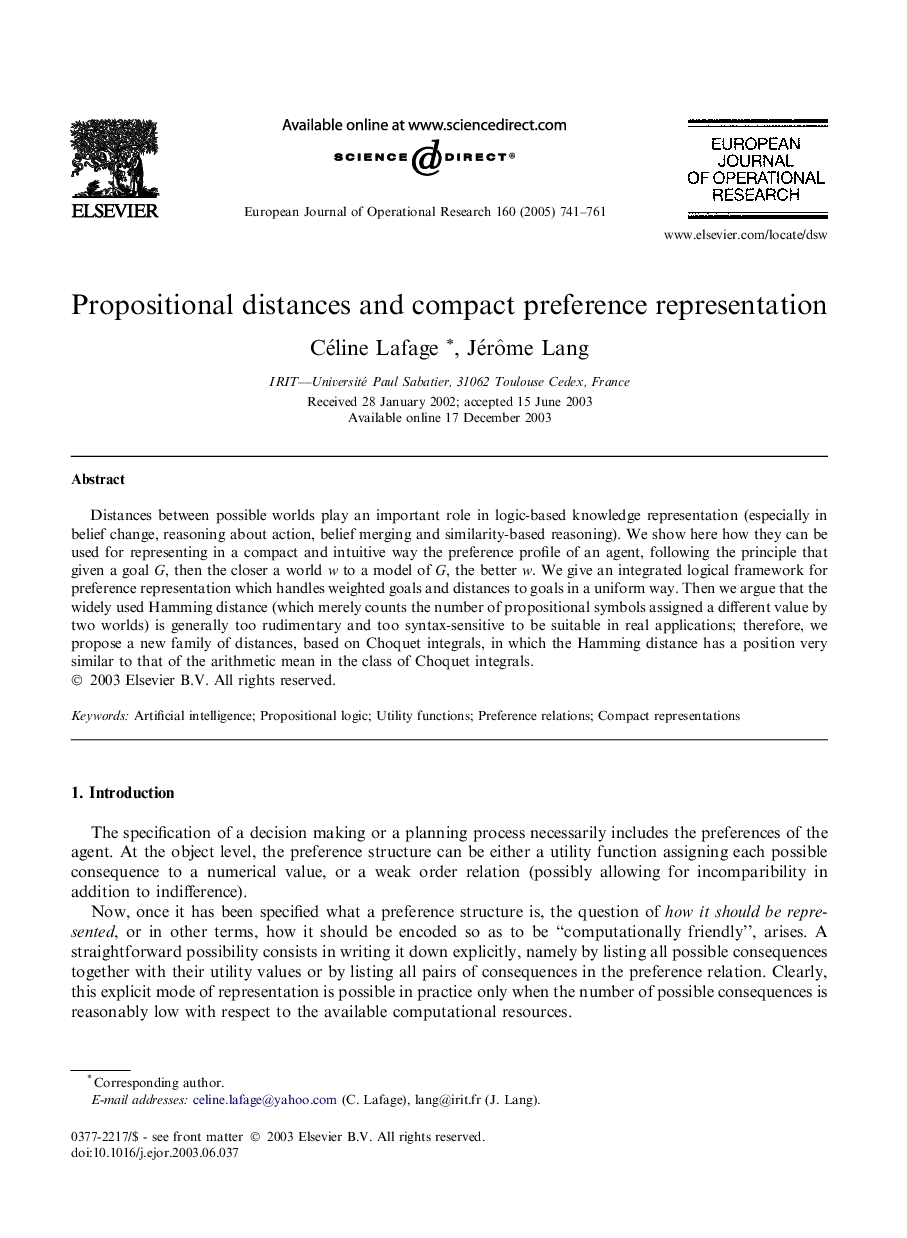| Article ID | Journal | Published Year | Pages | File Type |
|---|---|---|---|---|
| 9664064 | European Journal of Operational Research | 2005 | 21 Pages |
Abstract
Distances between possible worlds play an important role in logic-based knowledge representation (especially in belief change, reasoning about action, belief merging and similarity-based reasoning). We show here how they can be used for representing in a compact and intuitive way the preference profile of an agent, following the principle that given a goal G, then the closer a world w to a model of G, the better w. We give an integrated logical framework for preference representation which handles weighted goals and distances to goals in a uniform way. Then we argue that the widely used Hamming distance (which merely counts the number of propositional symbols assigned a different value by two worlds) is generally too rudimentary and too syntax-sensitive to be suitable in real applications; therefore, we propose a new family of distances, based on Choquet integrals, in which the Hamming distance has a position very similar to that of the arithmetic mean in the class of Choquet integrals.
Related Topics
Physical Sciences and Engineering
Computer Science
Computer Science (General)
Authors
Céline Lafage, Jérôme Lang,
